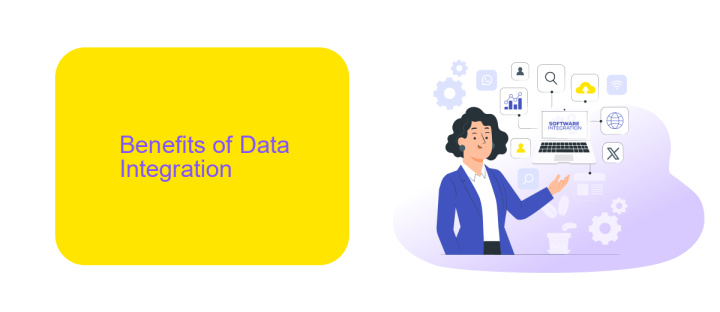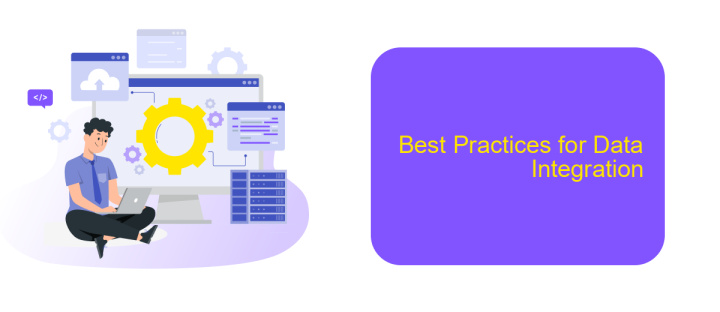Why Data Integration
In today's data-driven world, businesses are inundated with information from various sources. Data integration is essential for transforming this disparate data into a unified, coherent system, enabling more informed decision-making and streamlined operations. This article explores the importance of data integration, its key benefits, and how it can drive business success in an increasingly competitive landscape.
Why Data Integration?
Data integration is essential for organizations seeking to streamline operations and enhance decision-making processes. By consolidating data from multiple sources, businesses can achieve a holistic view of their operations, leading to more informed strategies and improved efficiency.
- Enhanced data quality and consistency
- Improved business intelligence and analytics
- Increased operational efficiency
- Better customer insights and experiences
- Streamlined collaboration across departments
Implementing data integration can be challenging, but services like ApiX-Drive simplify the process. ApiX-Drive allows seamless integration of various applications and data sources without the need for coding, making it accessible for businesses of all sizes. By leveraging such tools, companies can ensure that their data integration efforts are both effective and efficient.
Benefits of Data Integration

Data integration offers numerous benefits that can significantly enhance the efficiency and effectiveness of organizational operations. By consolidating disparate data sources into a unified system, businesses can achieve a comprehensive view of their data, leading to more informed decision-making. This holistic approach minimizes data silos, reduces redundancy, and ensures consistency across various departments. Moreover, integrated data facilitates advanced analytics and reporting, enabling organizations to uncover valuable insights and trends that can drive strategic initiatives.
Implementing data integration can also streamline workflows and improve productivity. Tools like ApiX-Drive simplify the integration process by allowing seamless connections between multiple applications and platforms without the need for extensive coding. This not only saves time but also reduces the likelihood of errors associated with manual data handling. Furthermore, automated data synchronization ensures that information is always up-to-date, enhancing real-time collaboration and operational agility. Ultimately, data integration empowers businesses to leverage their data assets more effectively, fostering innovation and competitive advantage.
Challenges of Data Integration

Integrating data from various sources is a complex task that presents several challenges. These challenges can hinder the seamless flow of information and affect the overall efficiency of an organization.
- Data Quality: Ensuring the accuracy and consistency of data from multiple sources can be difficult. Inconsistent data formats and incomplete data can lead to errors.
- Scalability: As the volume of data grows, maintaining the performance and scalability of data integration processes becomes challenging.
- Security and Compliance: Protecting sensitive data during integration and ensuring compliance with regulations such as GDPR is crucial.
- Complexity: Integrating data from disparate systems often involves complex mappings and transformations.
- Real-time Integration: Achieving real-time data integration requires robust infrastructure and can be resource-intensive.
Tools like ApiX-Drive can simplify data integration by providing automated workflows and seamless connections between various applications. By leveraging such platforms, organizations can mitigate many of these challenges, ensuring that data flows smoothly and securely across systems.
Best Practices for Data Integration

Effective data integration is crucial for ensuring seamless data flow across different systems and applications. To achieve this, it is essential to follow certain best practices that can help optimize the process and avoid common pitfalls. One of the key aspects is to clearly define your data integration goals and understand the specific requirements of your organization.
Another important practice is to choose the right tools and technologies that align with your integration needs. Services like ApiX-Drive can simplify the integration process by providing a user-friendly platform that connects various applications without the need for extensive coding. This can save time and resources while ensuring reliable data transfers.
- Define clear objectives and requirements.
- Select appropriate tools and technologies.
- Ensure data quality and consistency.
- Implement robust security measures.
- Regularly monitor and maintain integrations.
By adhering to these best practices, organizations can enhance their data integration efforts, leading to improved data accuracy and operational efficiency. Utilizing platforms like ApiX-Drive can further streamline the process, making it easier to manage and maintain integrations over time.
Conclusion
Data integration is a critical component for any organization aiming to optimize its operations and make data-driven decisions. By seamlessly connecting disparate data sources, businesses can achieve a unified view of their information, leading to more accurate insights and improved efficiency. This unified approach not only enhances decision-making but also streamlines processes, reduces redundancies, and ensures data consistency across the organization.
Implementing data integration can be challenging, but leveraging tools like ApiX-Drive can simplify the process. ApiX-Drive offers a user-friendly platform that allows businesses to easily set up and manage integrations without requiring extensive technical expertise. By automating data flows between various applications and systems, ApiX-Drive helps organizations save time and resources while maintaining data accuracy and reliability. Ultimately, effective data integration empowers businesses to harness the full potential of their data, driving growth and innovation.
FAQ
What is data integration?
Why is data integration important for businesses?
What are the common challenges in data integration?
How can businesses automate data integration processes?
What are the benefits of using a data integration service?
Apix-Drive is a universal tool that will quickly streamline any workflow, freeing you from routine and possible financial losses. Try ApiX-Drive in action and see how useful it is for you personally. In the meantime, when you are setting up connections between systems, think about where you are investing your free time, because now you will have much more of it.

